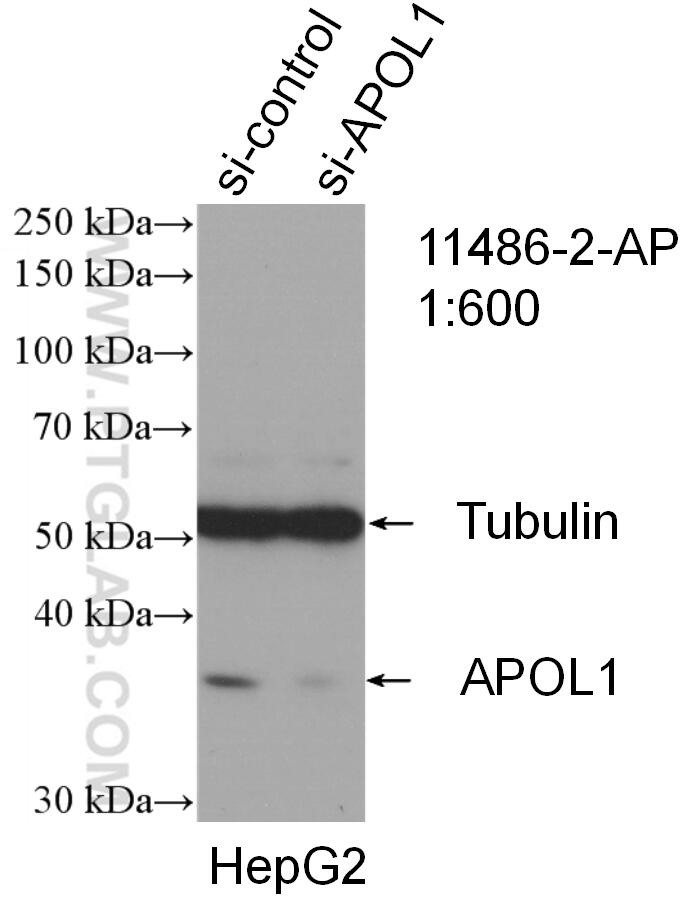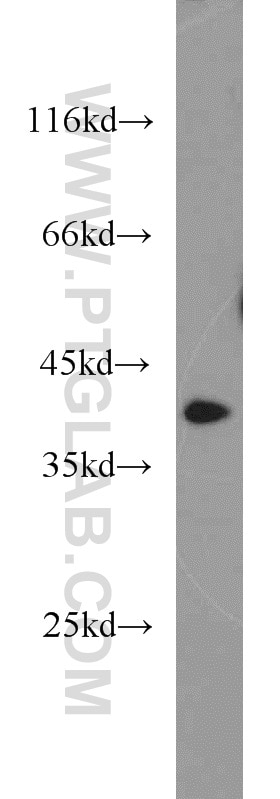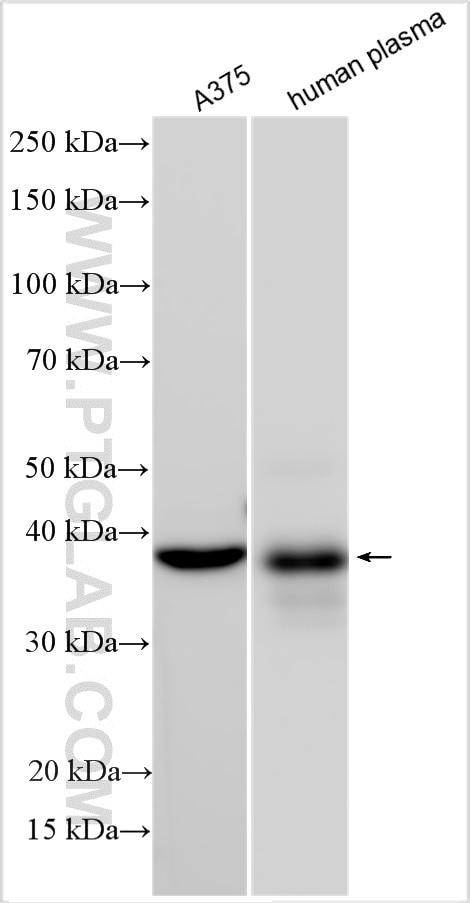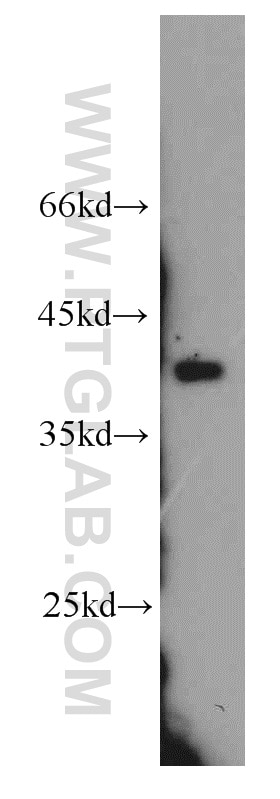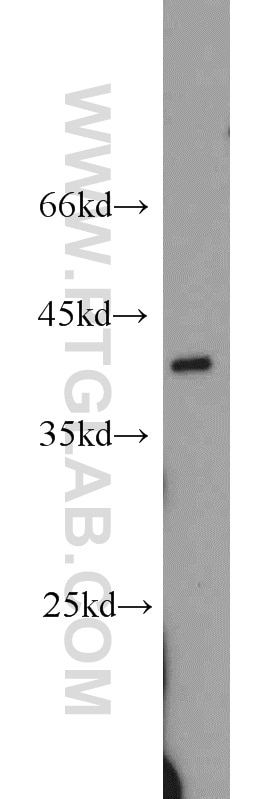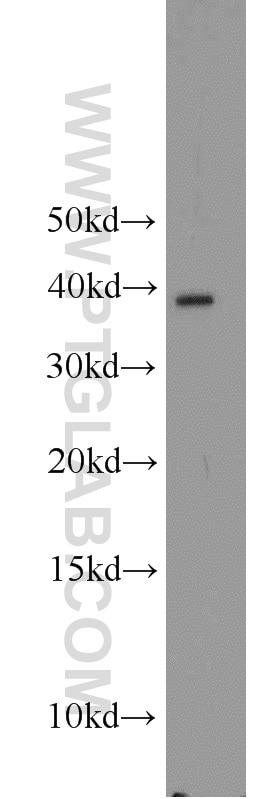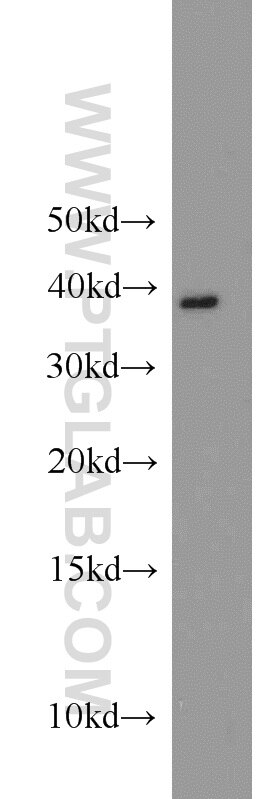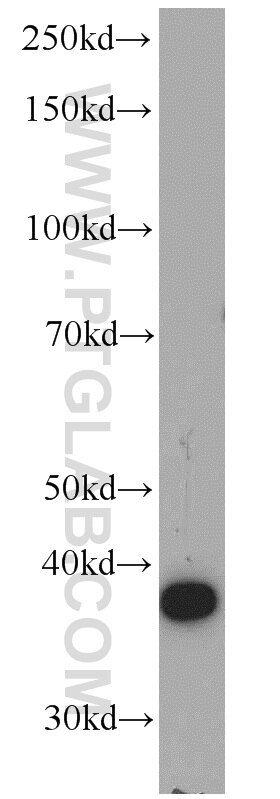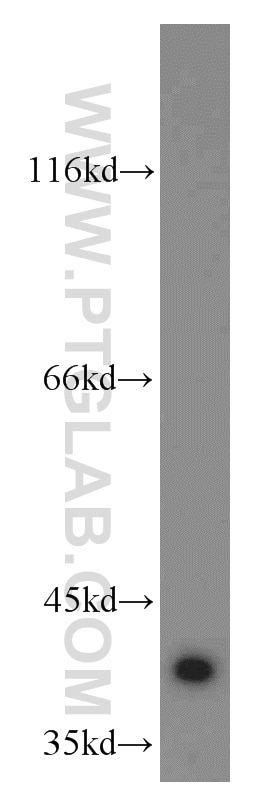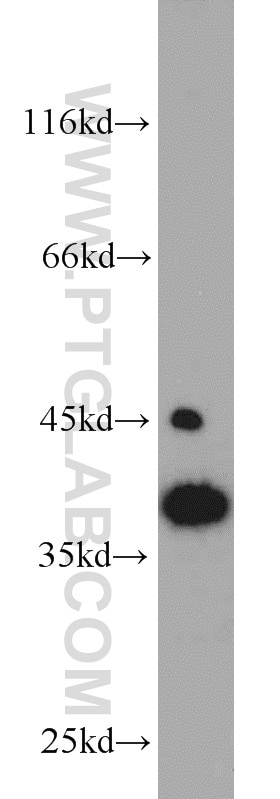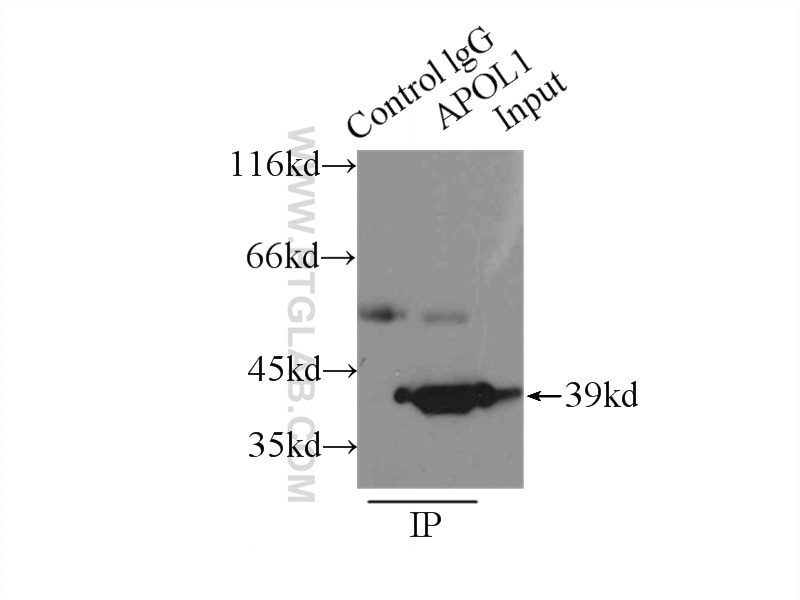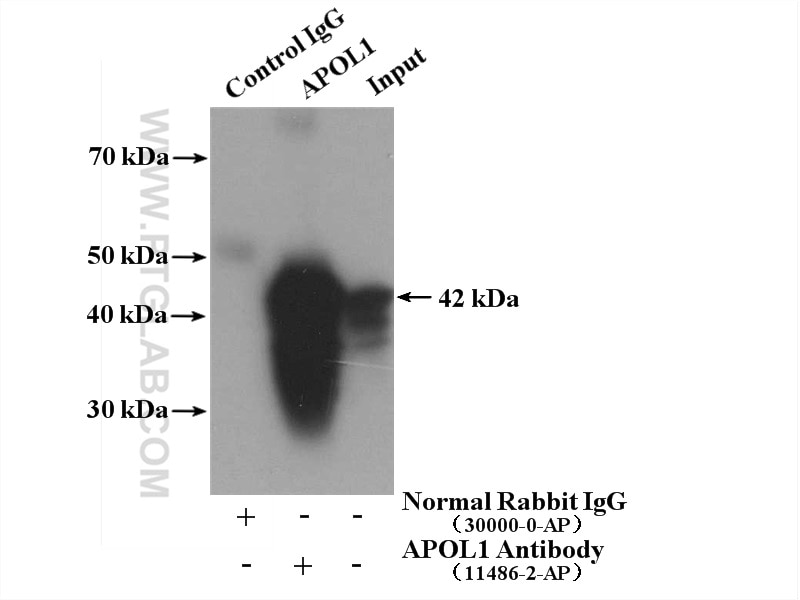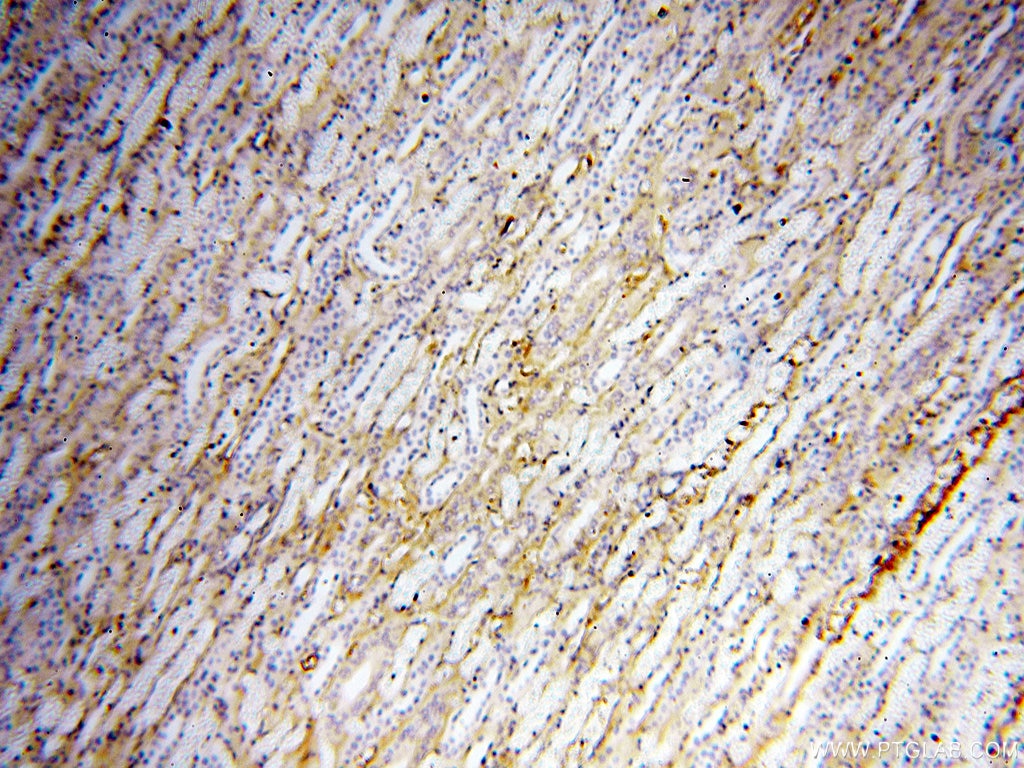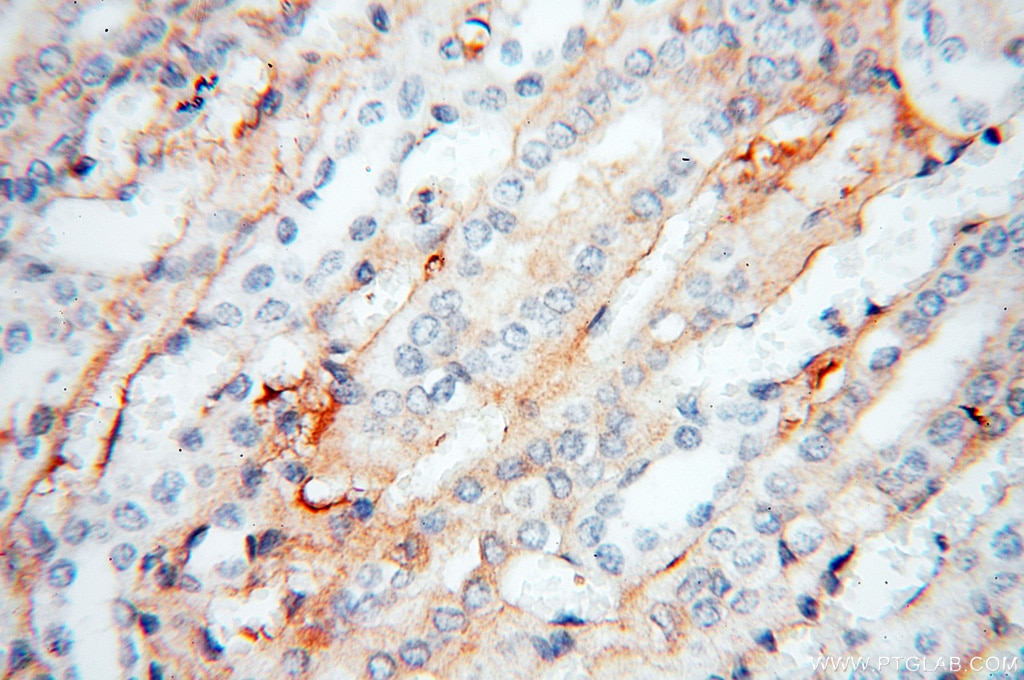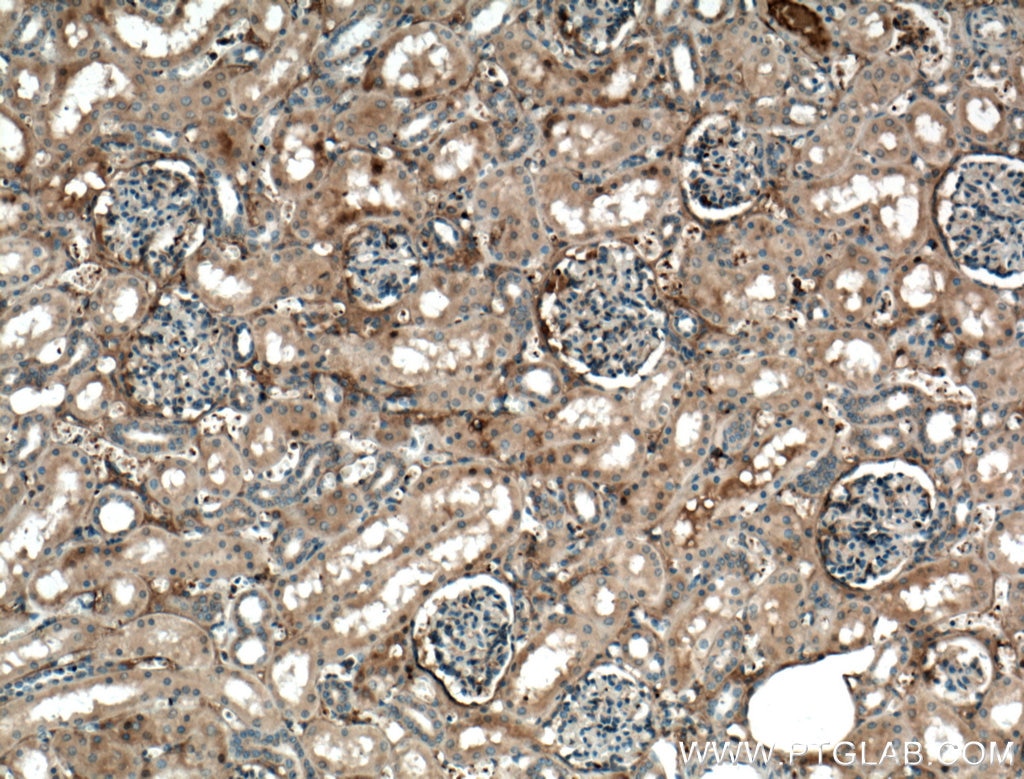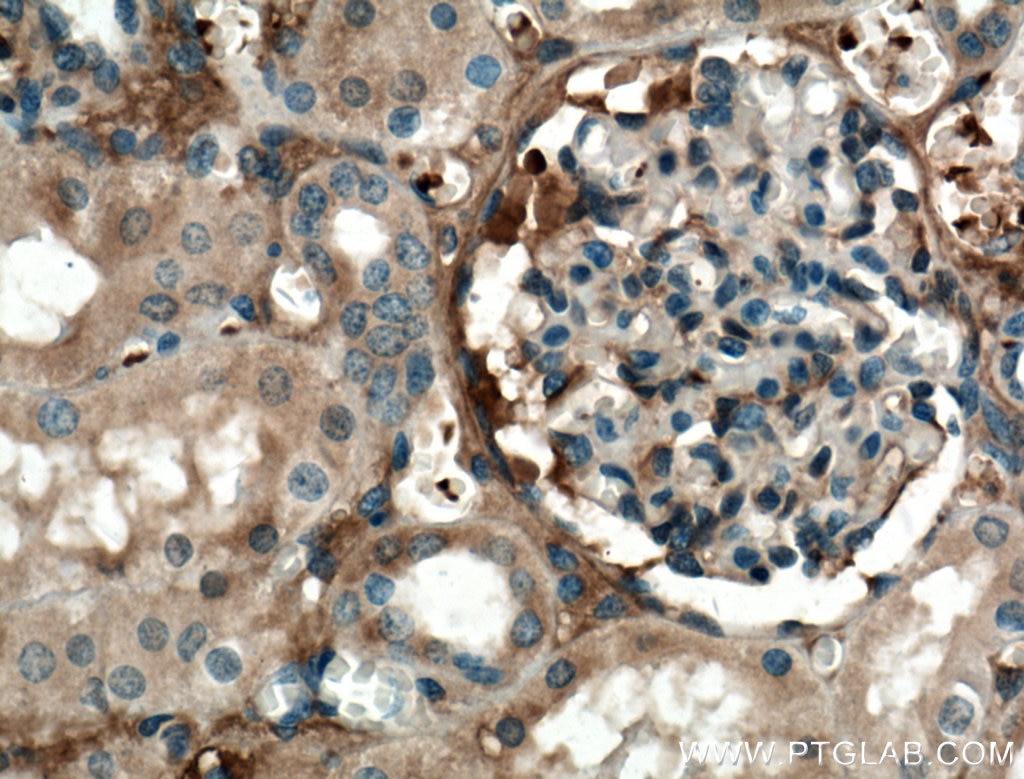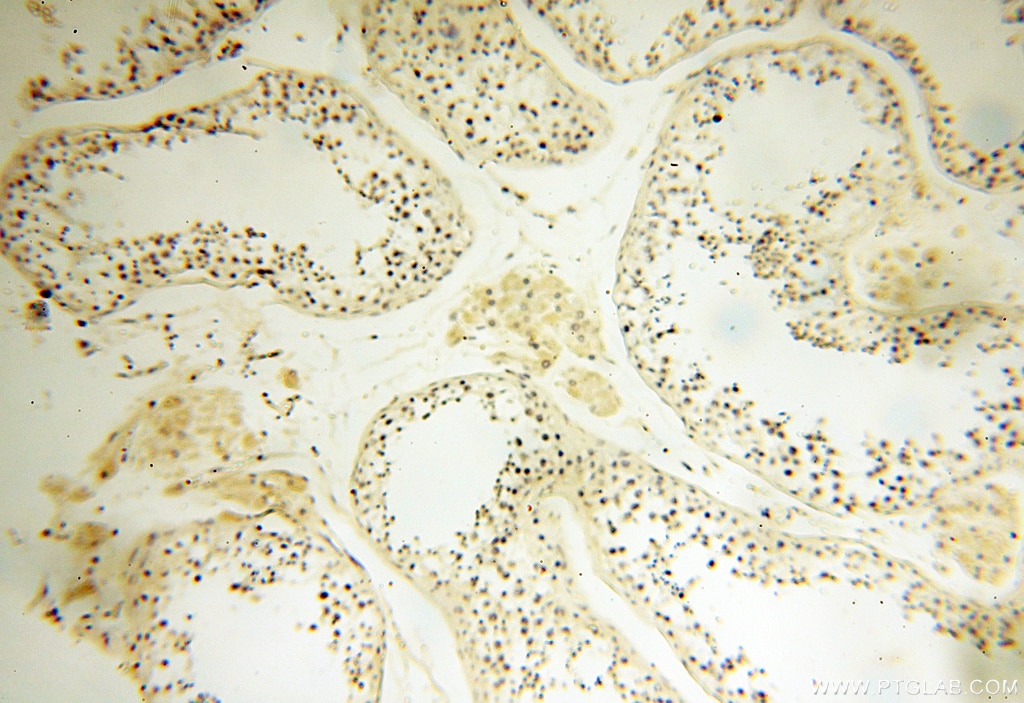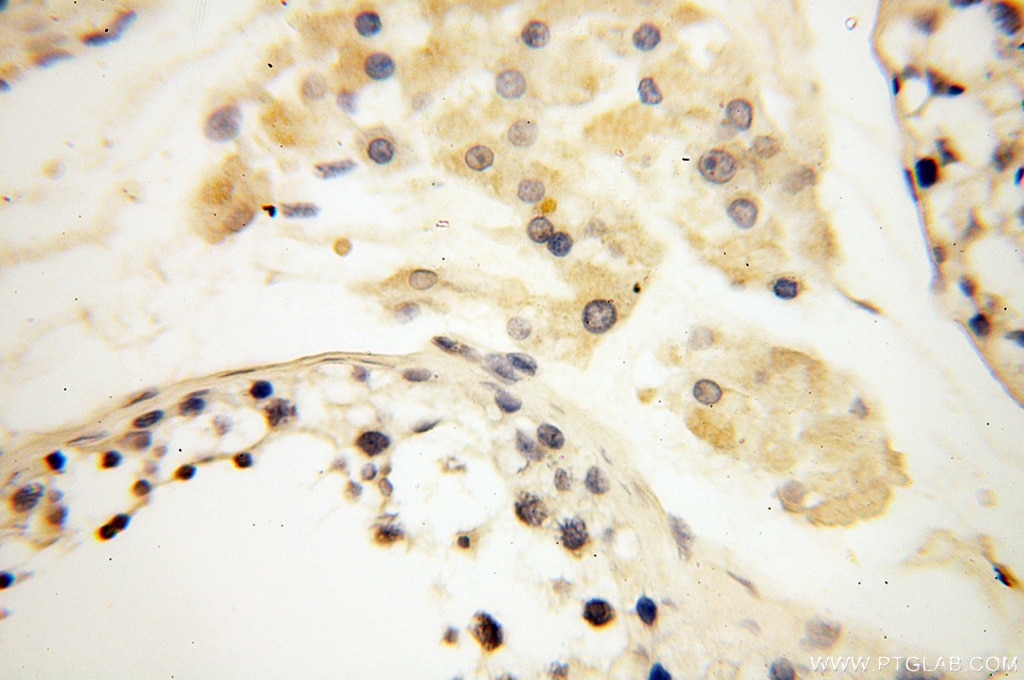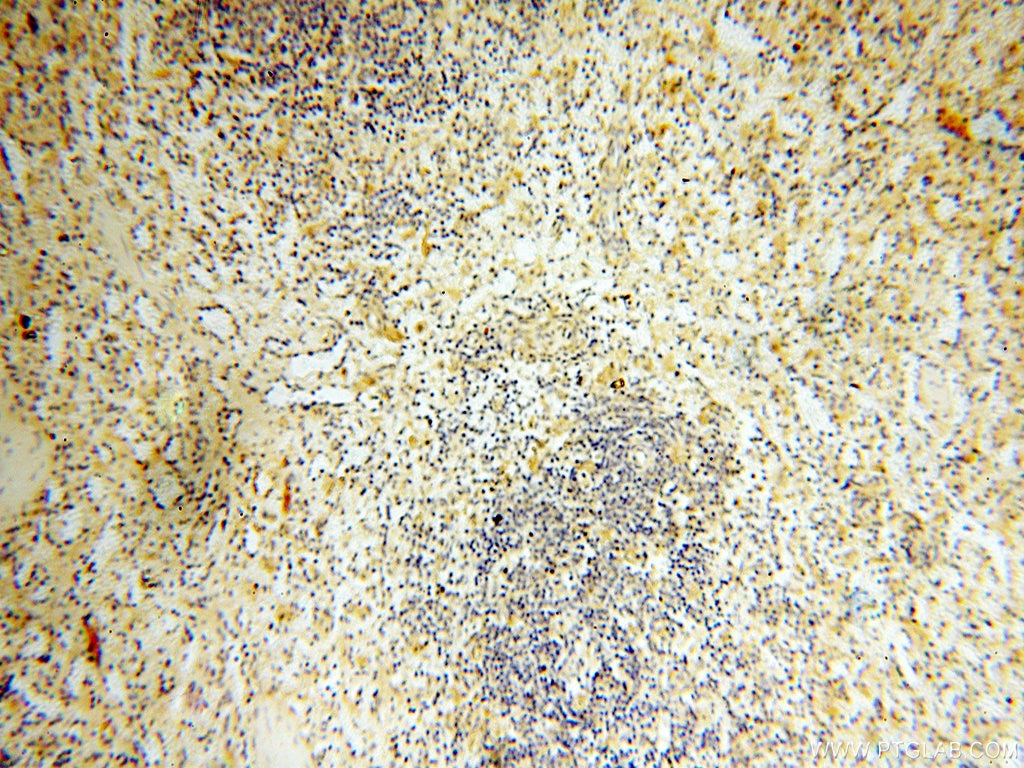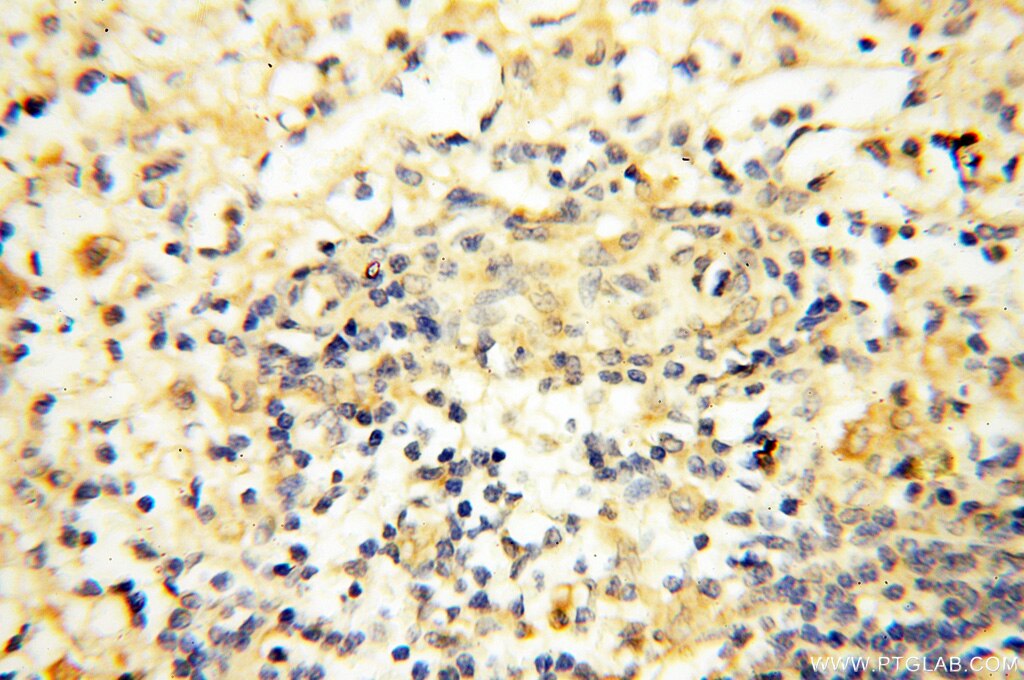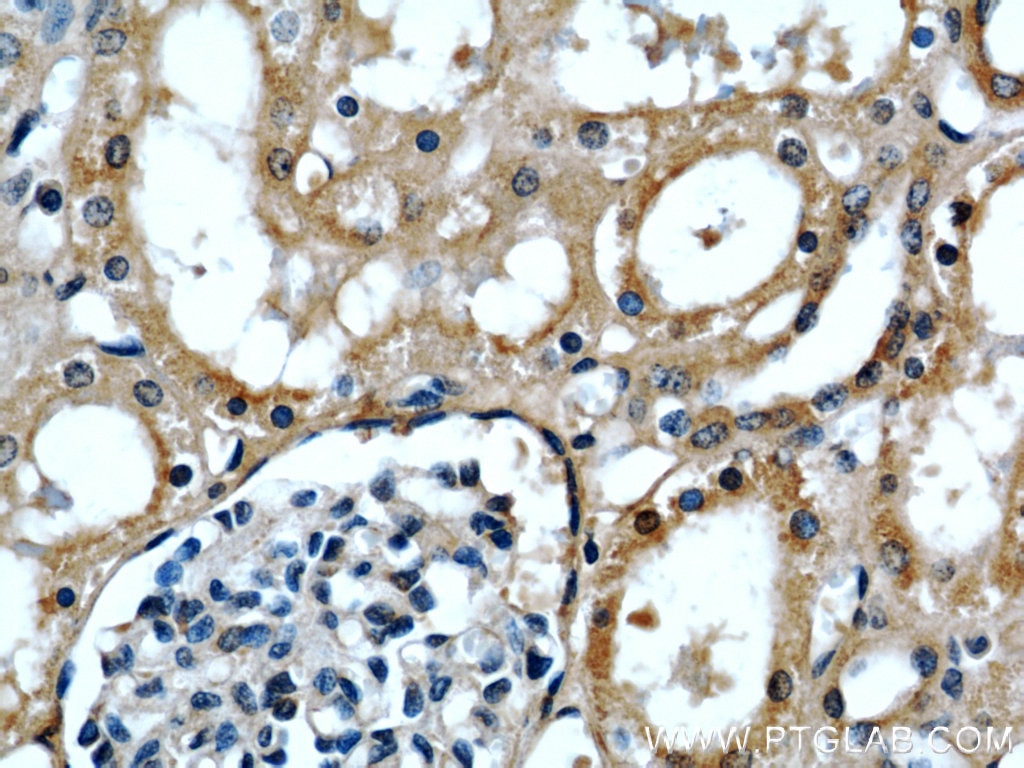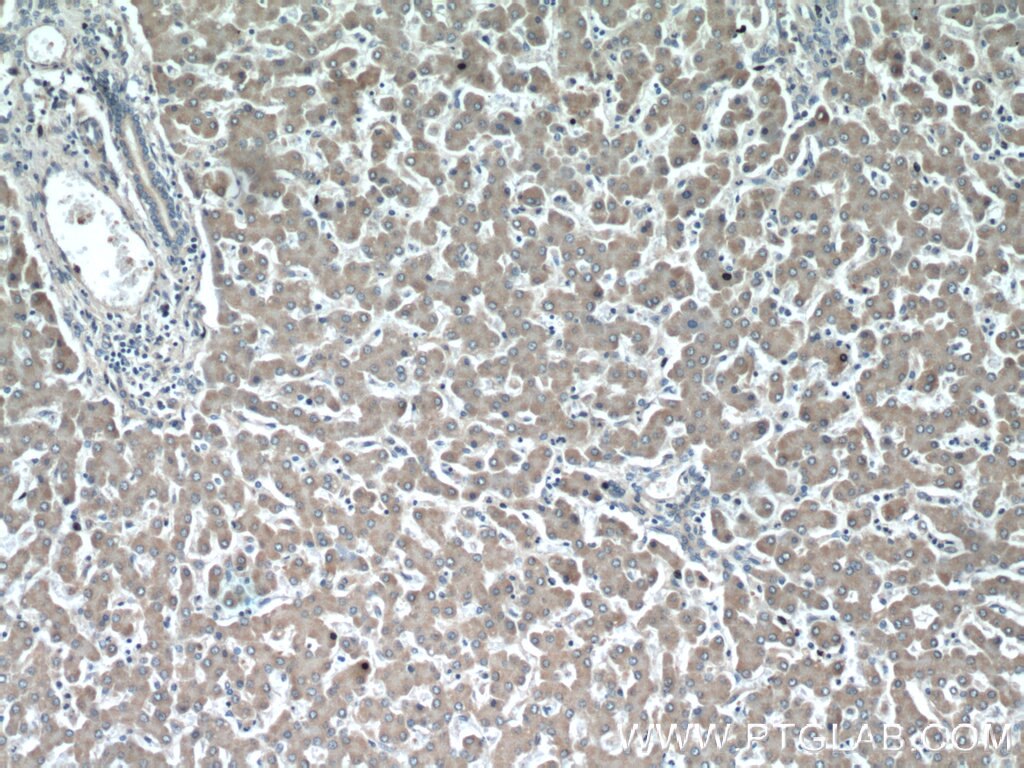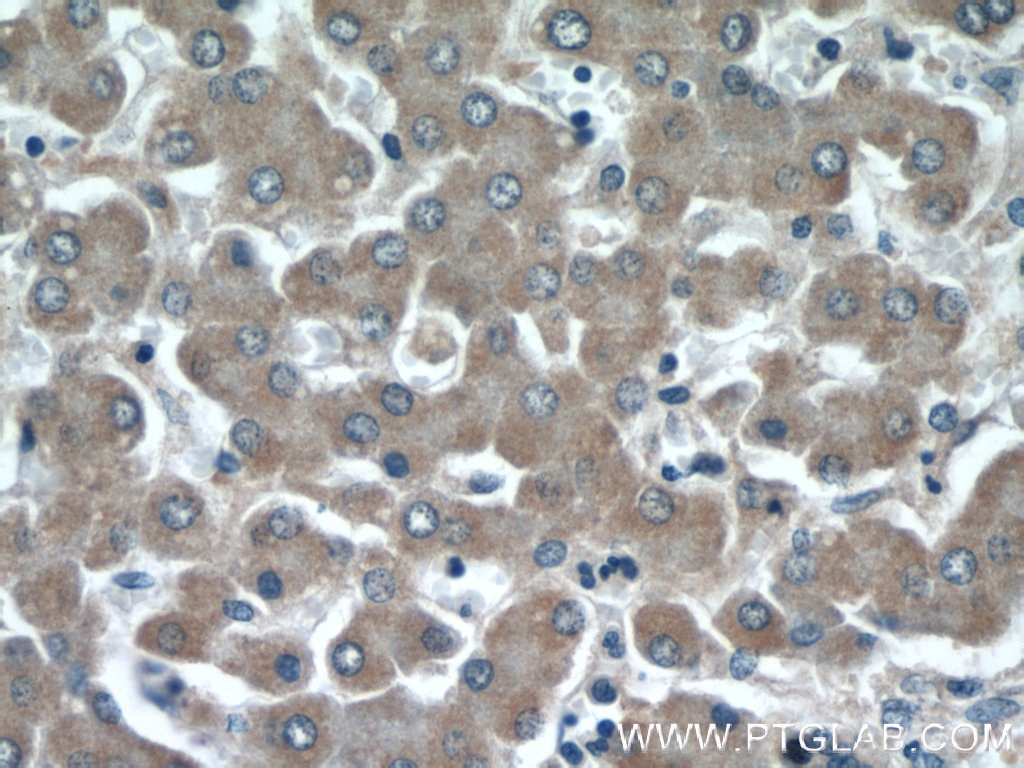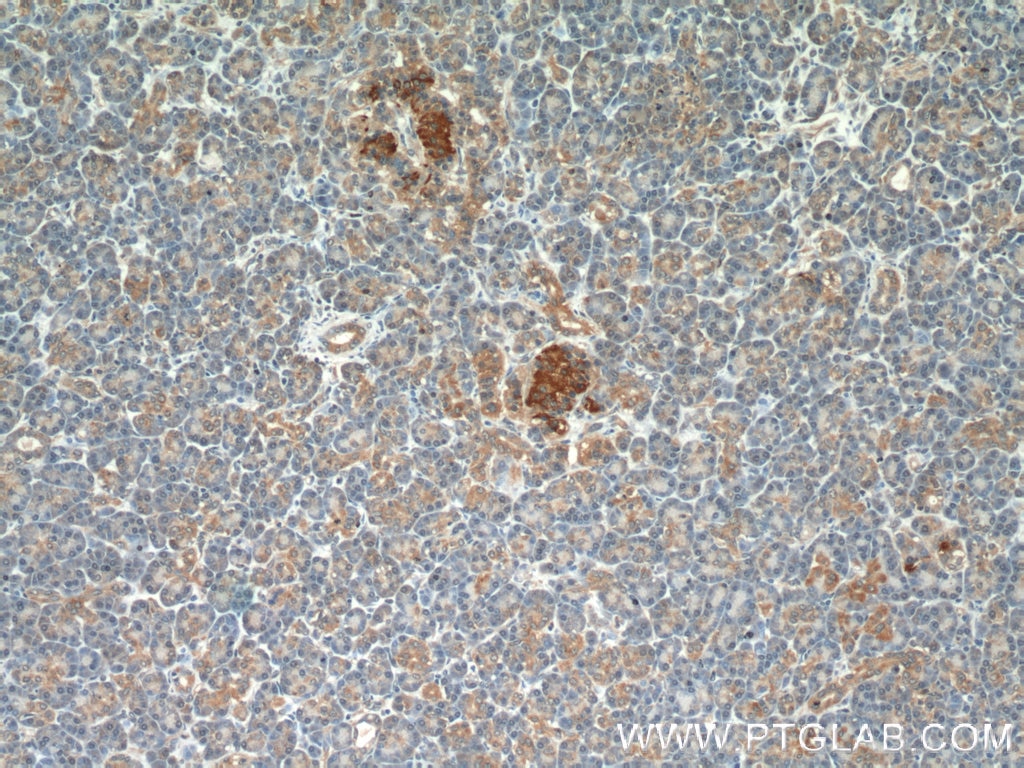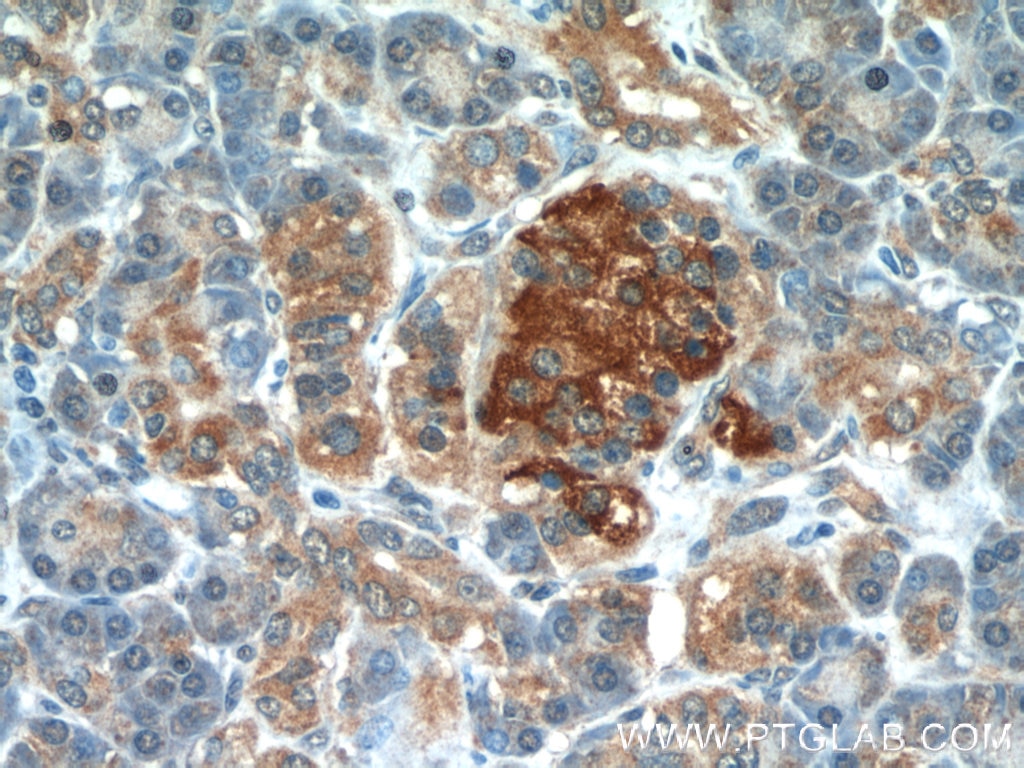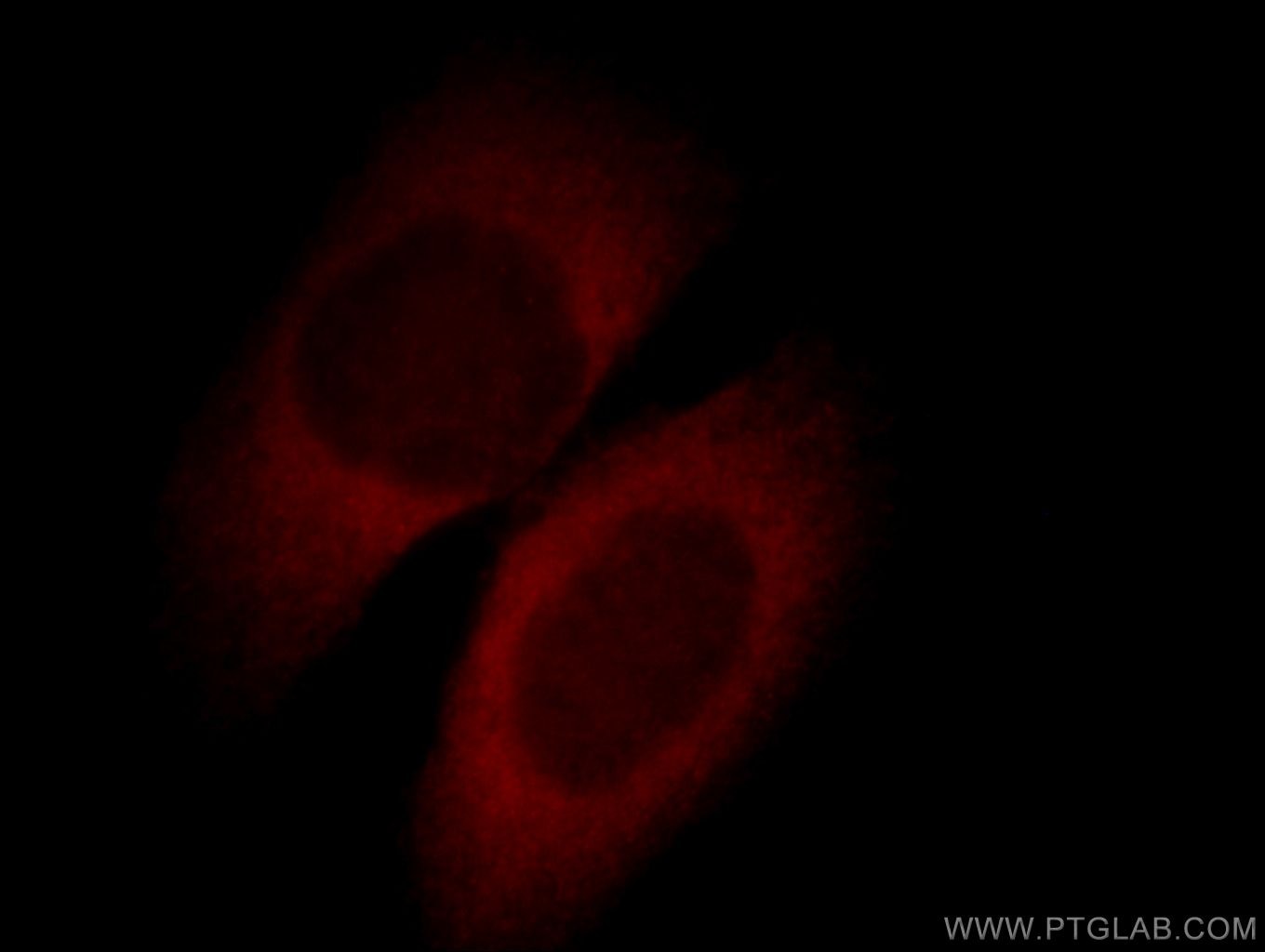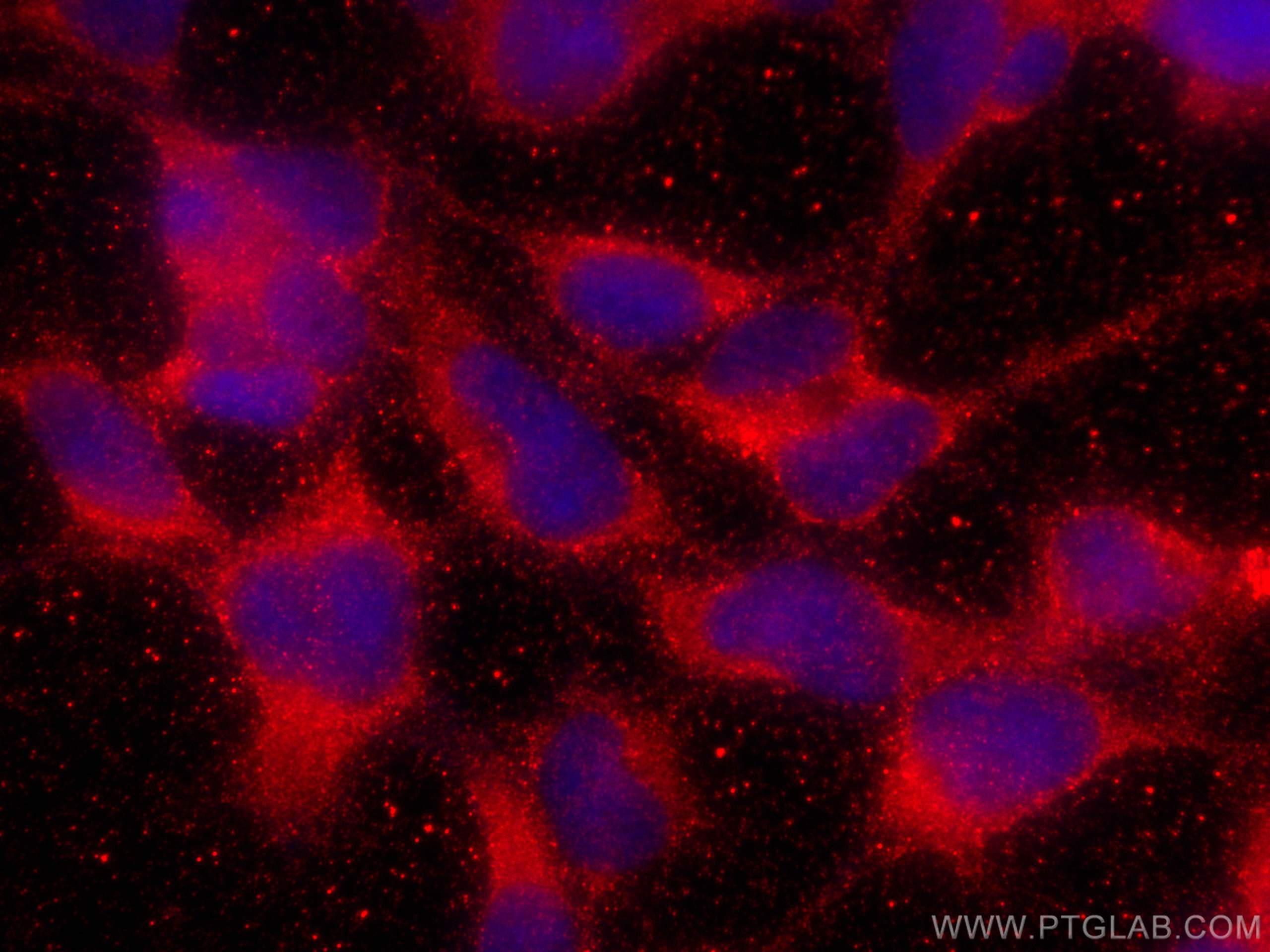- Phare
- Validé par KD/KO
Anticorps Polyclonal de lapin anti-APOL1
APOL1 Polyclonal Antibody for WB, IHC, IF/ICC, IP, ELISA
Hôte / Isotype
Lapin / IgG
Réactivité testée
Humain
Applications
WB, IHC, IF/ICC, IP, ELISA
Conjugaison
Non conjugué
N° de cat : 11486-2-AP
Synonymes
Galerie de données de validation
Applications testées
| Résultats positifs en WB | cellules A375, cellules A2780, cellules A549, cellules HeLa, cellules HepG2, cellules MCF-7, cellules SKOV-3, cellules SW-1990, plasma humain |
| Résultats positifs en IP | cellules HepG2, tissu plasmatique humain |
| Résultats positifs en IHC | tissu rénal humain, tissu hépatique humain, tissu pancréatique humain, tissu splénique humain, tissu testiculaire humain il est suggéré de démasquer l'antigène avec un tampon de TE buffer pH 9.0; (*) À défaut, 'le démasquage de l'antigène peut être 'effectué avec un tampon citrate pH 6,0. |
| Résultats positifs en IF/ICC | cellules HEK-293, cellules HepG2 |
Dilution recommandée
| Application | Dilution |
|---|---|
| Western Blot (WB) | WB : 1:1000-1:6000 |
| Immunoprécipitation (IP) | IP : 0.5-4.0 ug for 1.0-3.0 mg of total protein lysate |
| Immunohistochimie (IHC) | IHC : 1:50-1:500 |
| Immunofluorescence (IF)/ICC | IF/ICC : 1:200-1:800 |
| It is recommended that this reagent should be titrated in each testing system to obtain optimal results. | |
| Sample-dependent, check data in validation data gallery | |
Applications publiées
| KD/KO | See 2 publications below |
| WB | See 14 publications below |
| IHC | See 3 publications below |
| IF | See 6 publications below |
| IP | See 1 publications below |
Informations sur le produit
11486-2-AP cible APOL1 dans les applications de WB, IHC, IF/ICC, IP, ELISA et montre une réactivité avec des échantillons Humain
| Réactivité | Humain |
| Réactivité citée | Humain |
| Hôte / Isotype | Lapin / IgG |
| Clonalité | Polyclonal |
| Type | Anticorps |
| Immunogène | APOL1 Protéine recombinante Ag2016 |
| Nom complet | apolipoprotein L, 1 |
| Masse moléculaire calculée | 44 kDa |
| Poids moléculaire observé | 39 kDa |
| Numéro d’acquisition GenBank | BC017331 |
| Symbole du gène | APOL1 |
| Identification du gène (NCBI) | 8542 |
| Conjugaison | Non conjugué |
| Forme | Liquide |
| Méthode de purification | Purification par affinité contre l'antigène |
| Tampon de stockage | PBS with 0.02% sodium azide and 50% glycerol |
| Conditions de stockage | Stocker à -20°C. Stable pendant un an après l'expédition. L'aliquotage n'est pas nécessaire pour le stockage à -20oC Les 20ul contiennent 0,1% de BSA. |
Informations générales
Human apolipo-protein L1 (APOL1) is a minor component of plasma high density lipoprotein (HDL) particles, acting as an interacting protein of apolipoprotein A1 (ApoA1). The human ApoL protein family was thought to be predominantly involved in lipid transport and metabolism. APOL1 is also involved in host innate immunity against Trypanosoma parasites. Once activated, APOL1 can lyse the parasite and protect human from infection. Genetic variants in APOL1 gene, which are found in African ancestry with high frequency, associate with chronic kidney disease, like focal segmental glomerulosclerosis (FSGS), HIV-associated nephropathy (HIVAN), and hypertensive nephropathy. APOL1 share structural and functional similarities with proteins of the Bcl-2 family and may has roles in apoptosis and autophagy. It is notable that APOL1 exists only in human and a few other primate species, and mouse does not express an APOL1 orthologue. This antibody recognizes the endogenous APOL1 of 39-45 kDa in blood lysate.
Protocole
| Product Specific Protocols | |
|---|---|
| WB protocol for APOL1 antibody 11486-2-AP | Download protocol |
| IHC protocol for APOL1 antibody 11486-2-AP | Download protocol |
| IF protocol for APOL1 antibody 11486-2-AP | Download protocol |
| IP protocol for APOL1 antibody 11486-2-AP | Download protocol |
| Standard Protocols | |
|---|---|
| Click here to view our Standard Protocols |
Publications
| Species | Application | Title |
|---|---|---|
J Exp Med Distinct roles of apolipoprotein components within the trypanosome lytic factor complex revealed in a novel transgenic mouse model. | ||
Proc Natl Acad Sci U S A Hydrodynamic gene delivery of baboon trypanosome lytic factor eliminates both animal and human-infective African trypanosomes. | ||
J Am Soc Nephrol Domain-Specific Antibodies Reveal Differences in the Membrane Topologies of Apolipoprotein L1 in Serum and Podocytes.
| ||
J Am Soc Nephrol Apolipoprotein L1-Specific Antibodies Detect Endogenous APOL1 inside the Endoplasmic Reticulum and on the Plasma Membrane of Podocytes.
| ||
Br J Cancer A new panel of pancreatic cancer biomarkers discovered using a mass spectrometry-based pipeline. |
Avis
The reviews below have been submitted by verified Proteintech customers who received an incentive for providing their feedback.
FH David (Verified Customer) (02-04-2023) | Good antibody for detect apol1 protein
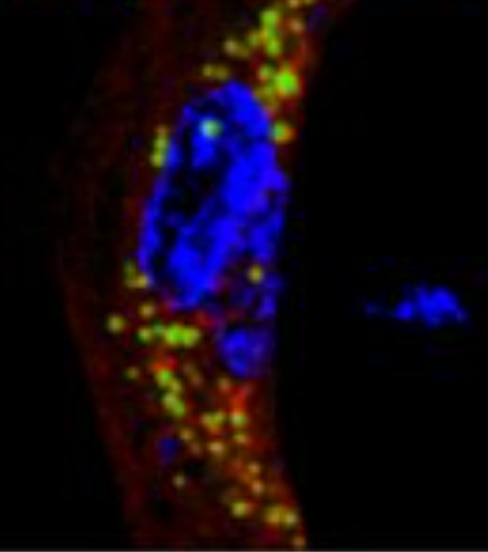 |
